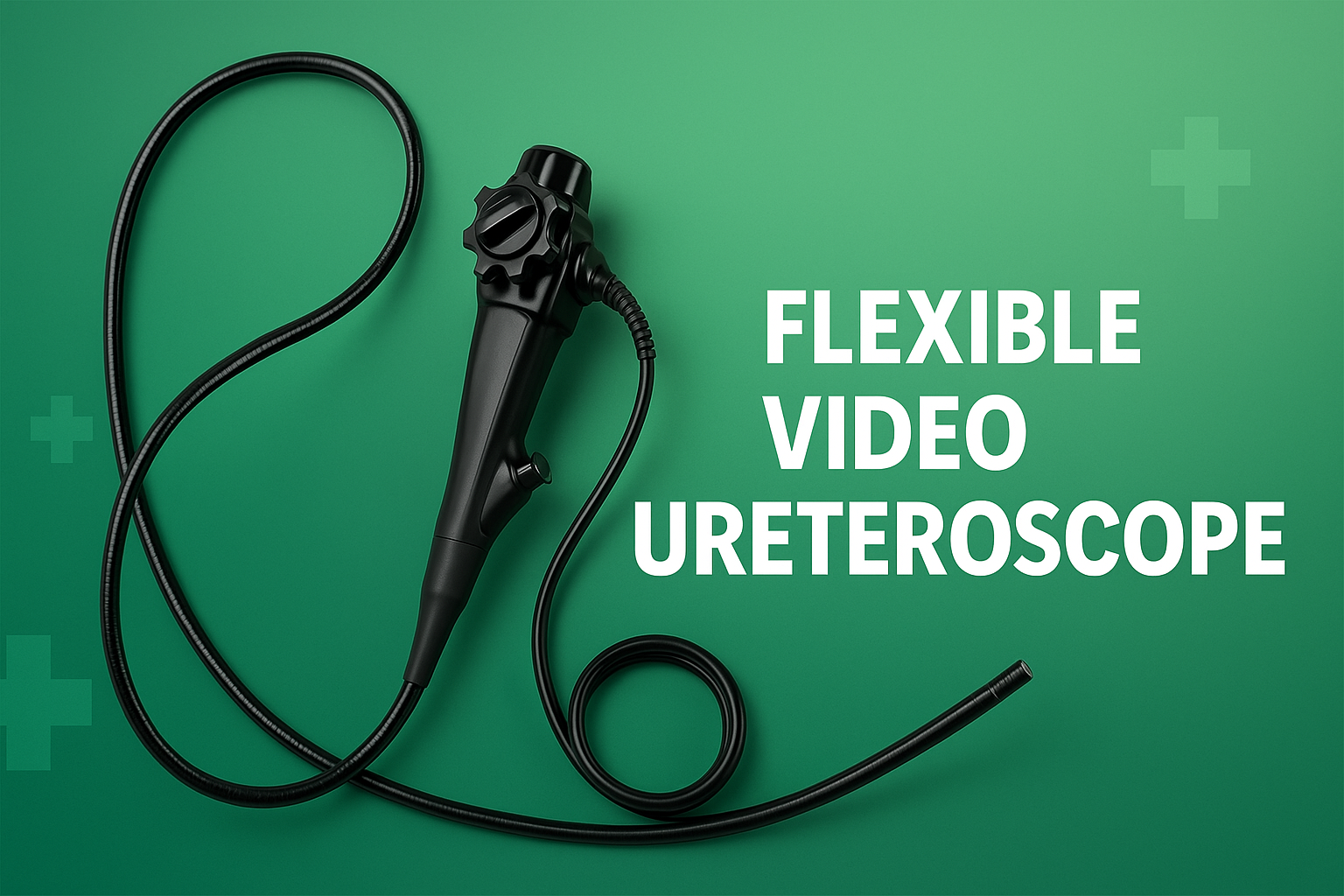How a Flexible Video Ureteroscope Improves Kidney Stone Management
Kidney stones can cause intense pain and serious complications if not treated effectively. Over the past decade, advances in endourology have transformed how clinicians approach stone removal. At the forefront of these developments is the flexible video ureteroscope—a device that combines the benefits of high-definition imaging with remarkable maneuverability. By enabling urologists to access and treat stones in virtually any part of the urinary tract, the flexible video ureteroscope has revolutionized kidney stone management. This article explores its key benefits, real-world impact, and future directions in patient care.
Understanding the Flexible Video Ureteroscope
A flexible video ureteroscope is a slim, steerable endoscopic instrument equipped with a high-resolution digital camera at its tip. Unlike earlier fiber-optic scopes, the flexible video ureteroscope transmits live video directly to a monitor, providing crisp images of the urinary tract. This clarity helps physicians identify stones, strictures, and other anomalies with unprecedented precision. The device’s flexibility allows it to navigate curves in the ureter and reach stones in the lower pole of the kidney that rigid scopes simply cannot access.
Incorporating the term flexible video ureteroscope into your practice discussion underscores how this technology differs from older tools. Traditional rigid ureteroscopes often forced patients to undergo more invasive treatments, whereas the flexible video ureteroscope minimises tissue trauma by conforming to the body’s natural anatomy. This adaptability not only boosts procedural success but also enhances patient comfort and safety.
Enhanced Visualization and Precision
One of the standout advantages of the flexible video ureteroscope is its superior visualization. The integrated digital chip inside the ureteroscope’s tip captures bright, high-definition images. Surgeons can zoom in on even tiny stones or areas of inflammation with clarity that fiber-optic scopes cannot match. By embedding the keyword flexible video ureteroscope in training materials, clinicians emphasize the importance of cutting-edge optics in improving diagnostic accuracy.
This enhanced visibility translates into greater precision during stone fragmentation. Using laser lithotripsy, urologists can target stones directly under video guidance, reducing the risk of collateral damage to healthy tissue. The flexible video ureteroscope supports delicate adjustments of laser fibers, allowing controlled energy delivery. In turn, patients experience fewer post-operative complications and faster recovery times.
Beyond stone treatment, the flexible video ureteroscope aids in managing complex cases such as ureteral strictures or tumors. With crisp visuals, surgeons can perform precise biopsies or stent placements under direct vision. The keyword flexible video ureteroscope becomes a shorthand for comprehensive endourological care, spanning both diagnostics and therapeutics.
A Minimally Invasive Approach
Minimally invasive procedures have become the gold standard in urology, and the flexible video ureteroscope exemplifies this trend. Rather than making large incisions, urologists access the urinary tract via the natural urethral opening. The thin diameter of modern flexible video ureteroscopes—often less than 8 French—minimises ureteral stretching and trauma. Patients thus face less pain, shorter hospital stays, and quicker returns to daily activities.
The flexible video ureteroscope’s sheath and working channel enable simultaneous irrigation, stone extraction, and laser insertion. By featuring the keyword flexible video ureteroscope in procedure guides, clinics highlight how this device supports single-session treatments. Where rigid scopes might require multiple procedures, the flexible video ureteroscope often achieves complete stone clearance in one sitting.
Lower complication rates also reflect this minimally invasive philosophy. Studies show that ureteral perforation and post-operative stricture formation occur significantly less often with flexible scopes compared to rigid instruments. For patients, this means fewer follow-up appointments, less discomfort, and a reduced likelihood of auxiliary procedures.
Increased Procedure Efficiency
Time in the operating room carries both clinical and economic weight. The flexible video ureteroscope improves efficiency by streamlining stone management workflows. High-definition video output allows assistants and trainees to view procedures in real time, facilitating smoother teamwork. Embedding flexible video ureteroscope into checklist protocols ensures every team member understands the device’s capabilities before surgery begins.
Modern flexible video ureteroscopes also boast enhanced durability. Unlike early models prone to fiber breakage, current digital ureteroscopes withstand repeated sterilization cycles without loss of image quality. This reliability reduces downtime for repairs and lowers overall instrument costs. Clinics that track procedure metrics often cite the flexible video ureteroscope’s longevity as a key factor in maintaining high throughput.
Furthermore, the device’s ergonomic design reduces surgeon fatigue. Well-balanced handpieces and intuitive control dials allow fine tip deflection with minimal effort. By emphasizing flexible video ureteroscope ergonomics in training, healthcare institutions promote sustained surgeon performance even during long or complex cases.
Improved Patient Outcomes
Ultimately, the success of any medical device is measured in patient outcomes. The flexible video ureteroscope delivers improvements across multiple dimensions:
-
Higher Stone-Free Rates: With superior access and visualization, doctors achieve complete stone removal more often in the first procedure.
-
Lower Complication Rates: Gentle navigation and precise laser targeting minimise ureteral trauma.
-
Reduced Pain and Morbidity: Patients report lower pain scores and less need for analgesics post-operatively.
-
Shorter Hospital Stays: Many procedures become truly outpatient, cutting inpatient days and boosting patient satisfaction.
By referencing the keyword flexible video ureteroscope in patient education materials, physicians reinforce a commitment to cutting-edge care. Testimonials frequently highlight the swift relief of symptoms and the ability to resume work and regular activities within days. Informed patients, familiar with terms like flexible video ureteroscope, feel more confident about choosing endourological treatment options.
Training, Adoption, and Learning Curve
Integrating new technology always poses a learning curve. However, the transition to flexible video ureteroscope platforms has been remarkably smooth for most urology teams. Comprehensive training programs blend hands-on workshops with virtual reality simulators that replicate the tactile feedback of ureteroscope navigation. By calling out flexible video ureteroscope in curriculum outlines, educators ensure trainees appreciate both the technical and clinical nuances of the device.
Peer-to-peer mentorship further accelerates adoption. As urologists gain familiarity, they refine techniques for complex maneuvers, such as accessing lower pole stones or negotiating tight ureteral bends. Real-world case studies—often featuring the term flexible video ureteroscope in their titles—document best practices and innovative modifications to existing protocols.
In regions with limited resources, portable ureteroscope systems offer an affordable path to modern care. Compact digital towers and reusable scopes reduce per-case costs, making flexible video ureteroscope advantages accessible to a broader patient population. This democratization of high-end endourology underscores the device’s role in improving global kidney stone management standards.
Future Directions in Ureteroscopic Technology
As technology evolves, so too will the capabilities of the flexible video ureteroscope. Ongoing research focuses on integrating advanced features:
-
Robotic Assistance: Automated tip control promises to enhance precision and reduce manual strain.
-
Ultra-High-Definition Imaging: 4K and even 3D visualization aim to provide surgeons with unprecedented detail.
-
Disposable Components: Single-use distal tips may lower infection risk and maintenance costs.
-
AI-Driven Stone Detection: Machine-learning algorithms could highlight stones or suspicious tissue in real time.
Incorporating flexible video ureteroscope innovations into discussion panels ensures the field remains at the cutting edge. As these advancements mature, patients will benefit from faster, safer treatments and even better outcomes.
Conclusion
The flexible video ureteroscope stands as a landmark innovation in kidney stone management. By marrying high-definition imaging with unmatched flexibility, it has redefined what is possible in endourology. From enhanced visualization and minimally invasive access to streamlined workflows and superior patient outcomes, the benefits are clear. As training programs evolve and technology progresses, the flexible video ureteroscope will remain central to modern stone treatment. For clinicians and patients alike, embracing this device means faster relief, fewer complications, and a brighter future for kidney stone care.
Throughout this article, integrating the keyword flexible video ureteroscope highlights its critical role in transforming practice patterns. As its adoption grows worldwide, the device’s impact on patient quality of life and healthcare efficiency will only expand—cementing its status as an indispensable tool in the urologist’s arsenal.






